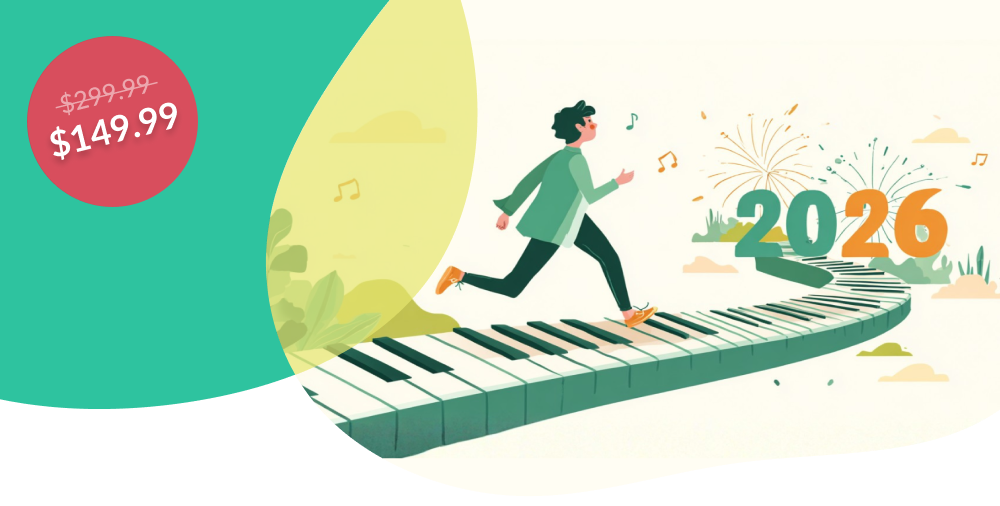Video tutorial
Learn to play “Blue Moon” by Elvis Presley on piano. Start a free trial today to access the lesson! “Blue Moon” by Elvis Presley is a timeless classic that showcases the legendary singer’s vocal talent and charisma. The song was originally written by Richard Rodgers and has been covered by numerous artists, but Elvis’s rendition remains one of the most famous. Elvis Presley, known as the “King of Rock and Roll,” was a prominent figure in the music industry, with a versatile style that encompassed blues, country, pop, and rock genres. His influence on the development of popular music is immense, making him an iconic figure in the history of music. “Blue Moon” features a simple yet captivating chord progression in the key of C major: C – Am – F – G. This progression, along with its classic doo-wop style and romantic melody, gives the song a memorable and nostalgic feel. The piano skill level required to play “Blue Moon” by Elvis Presley is considered to be at a mid-level. Players should be comfortable with basic chord progressions and have a good understanding of arpeggios, which are used in the accompaniment to create a flowing sound. Practicing the chord changes and focusing on maintaining a smooth rhythm are essential for capturing the song’s emotional essence.Introduction
- Fall in love with the music - Learn your favorite songs, at a level suitable for you.
- Enjoy interactive piano lessons - Explore courses covering music theory, technique chords & more.
- Get real-time feedback - Skoove's feedback tells you what went well and what needs practice.

Cheat sheet: “Blue Moon” by Elvis Presley
| Artist | Elvis Presley |
| Composer | Richard Rodgers |
| Key | F |
| Chords | C Major, A Minor, F Major, G Major |
| Release year | 1956 |
| Genre | BLUES, COUNTRY, POP, ROCK |
| Difficulty level | Mid |
| Meter | 4/4 |
| Techniques | In “Blue Moon” by Elvis Presley, the pianist uses arpeggios in the left hand to create a flowing accompaniment throughout the song. |
“Blue Moon” chords
The chord progression of “Blue Moon” by Elvis Presley in the key of C major is as follows:C – Am – F – GThis progression repeats throughout the song, giving it a simple and catchy feel. The song features a classic doo-wop style with smooth vocals and a romantic melody. Elvis’s rendition of “Blue Moon” is a timeless classic that showcases his vocal talent and charisma.
Chords charts
The chords for “Blue Moon” by Elvis Presley are:
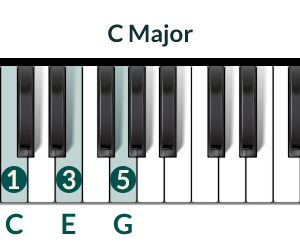
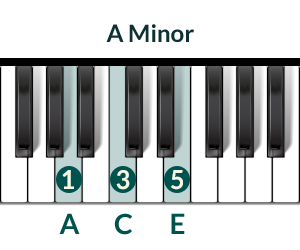
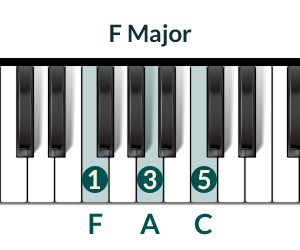
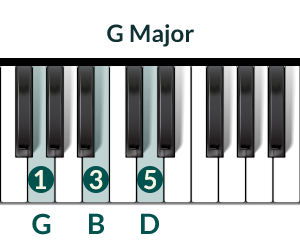
Lesson plan
Step 1: listen to the song
Listen to the song “Blue Moon” by Elvis Presley a couple of times to get a sense of its overall structure and nuances.
Step 2: practice the “Blue Moon” chords
Take a look at the chord charts and practice playing those chords. Make sure that you’re paying attention to your hand positioning.
Step 3: try the tune in the right hand
Try playing the melody in the right hand only initially and get accustomed to it.
Step 4: learn the left hand accompaniment
Now take a look at the accompaniment in the left hand and get more familiar with that part.
Step 5: play both hands together
Once you’ve learned the song for both hands separately, you can try playing hands together. It’s helpful to start slowly and then increase tempo as you get more accustomed to playing both parts simultaneously. You can use the metronome in the Skoove app to help with this.
Interesting facts
1. Original song: “Blue Moon” was originally written by Richard Rodgers and Lorenz Hart in 1934 for the film “Manhattan Melodrama.” Elvis Presley’s rendition of the song brought it to a new generation of listeners in a different musical style.
2. Multiple covers: Apart from Elvis Presley, “Blue Moon” has been covered by numerous artists across various genres, showcasing the timeless appeal of the song. This includes versions by Frank Sinatra, Billie Holiday, and The Marcels.
3. Rock and roll icon: Elvis Presley’s interpretation of “Blue Moon” highlights his versatility as an artist who could seamlessly transition between rock and roll, blues, country, and pop genres, showing his influence on the music industry.
4. Chart success: Elvis Presley’s version of “Blue Moon” was a commercial success, reaching high positions on music charts when it was released in 1956. It further solidified his status as a prominent figure in the music world.
5. Enduring legacy: “Blue Moon” remains a beloved classic, often featured in movies, television shows, and commercials, ensuring that Elvis Presley’s rendition continues to resonate with audiences of all ages.

Conclusion
By following this tutorial on “Blue Moon” by Elvis Presley, you would have achieved a solid understanding of playing a classic song with a simple yet catchy chord progression in the key of C major. They would have honed their skills in playing C Major, A Minor, F Major, and G Major chords while mastering a beloved doo-wop style melody.
As you continue your piano journey, remember that each song you learn adds a new dimension to your playing and repertoire. Keep exploring new pieces, experimenting with different genres, and challenging yourself to grow as a musician.
Ready to enhance your piano skills further? Sign up for more lessons today and unlock the full potential of your musical talent. Whether you’re a beginner or an intermediate player, each lesson will bring you closer to becoming the pianist you aspire to be.
FAQs for “Blue Moon” by Elvis Presley
The chord progression of “Blue Moon” by Elvis Presley is C – Am – F – G in the key of C major.
The tempo of “Blue Moon” by Elvis Presley is 89.0 beats per minute.
The time signature of “Blue Moon” by Elvis Presley is 4/4.
“Blue Moon” by Elvis Presley is played in the key of F major.
The difficulty level of playing “Blue Moon” by Elvis Presley on the piano is considered to be mid-level.
Generated by AI with Verified Data Sources
This piano tutorial has been produced using an innovative AI process where we integrate data from respected sources like GetSongbpm API, the YouTube API, OpenAI API, and Perplexity API. Our approach carefully combines these reources to create structured, user-friendly piano learning content.”













